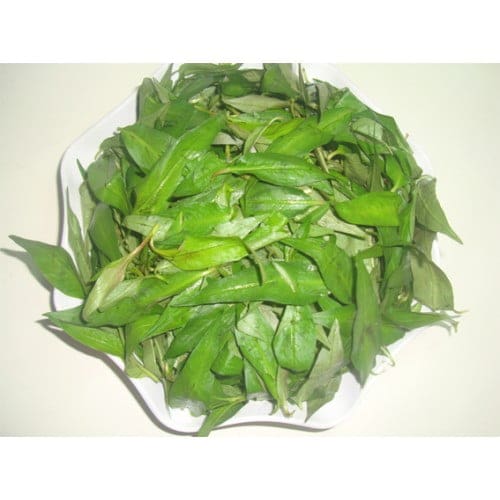
Rau Ram
Rau Ram, also known as Vietnamese coriander or Persicaria odorata, is a distinctive herb widely used in Southeast Asian cuisine, particularly in Vietnamese, Cambodian, and Thai cooking. Despite its common name, it’s not related to true coriander (Coriandrum sativum), although its flavour bears some similarities. Rau Ram brings a unique peppery, slightly citrusy taste with a faint hint of mint and lemon zest — a complex flavour profile that makes it both intriguing and versatile in culinary applications.
The herb is easily recognised by its long, narrow, pointed leaves with a slightly dark, maroon-coloured marking running along the centre vein. It grows in warm, humid climates and is typically cultivated in moist soil, often near water sources. Rau Ram thrives year-round in tropical regions, making it a constant fixture in herb gardens across Southeast Asia.
In Vietnamese cuisine, Rau Ram is a key ingredient in goi ga (Vietnamese chicken salad), where its fresh, peppery zing cuts through the richness of shredded chicken and fish sauce dressing. It’s also commonly served as a garnish alongside fertilised duck eggs (balut) and in noodle soups such as bun rieu (crab and tomato noodle soup). In Cambodian dishes, it enhances soups and curries, and in Malaysia, it’s found in laksa, contributing a herbaceous depth to the spicy broth.
Beyond its culinary uses, Rau Ram is valued in traditional medicine. It’s believed to have antibacterial properties, aid digestion, and improve circulation. However, folklore in some cultures also claims that excessive consumption may reduce libido — a notion that’s more anecdotal than scientific.
For those cultivating Rau Ram at home, it’s relatively easy to propagate via cuttings, and it grows well in containers provided it receives ample water and partial sunlight. Its bold flavour means a little goes a long way, making it a worthy addition to any adventurous cook’s herb collection. Whether tossed into salads, stirred into soups, or used as a garnish, Rau Ram brings an unmistakable flair of Southeast Asia to the plate.
